Viking Sword
349,00$ Original price was: 349,00$.249,00$Current price is: 249,00$.
Viking sword is one of the well known sword in the world, we produce handmade battle ready Viking sword, Buy Now!
Viking Sword: A Historical Masterpiece Crafted in Carbon Steel
The Viking Sword, a weapon that symbolizes the grandeur of the Viking Age, is a true piece of art and history. Embellished with intricate details and manufactured with materials that stay true to the ancient methodologies, this sword is an epitome of craftsmanship. Below, we delve into the specifics that make this weapon unique:
- Carbon Steel Blade: The backbone of its strength, providing durability.
- All Handmade: A testament to traditional craftsmanship.
- Walnut Root Handle: Enhancing both grip and beauty.
- High-Quality Metal Guard: Combining safety with aesthetic elegance.
- Full Length: 104 cm, a perfect balance of power and control.
- Handle Length: 19.5 cm, providing comfort in handling.
Now, let’s explore the historical significance and the timeless appeal of the Viking Sword.
A Symbol of the Viking Era
The Viking Sword represents a period dating back to the 8th to the 11th centuries, a time when Norse seafarers known as Vikings explored, traded, and conquered. These swords were not just tools of war but also symbols of status and honor.
The Craftsmanship: All Handmade with Carbon Steel
The process of crafting a Viking Sword is a labor of love. The blade is forged from carbon steel, known for its resilience, and then meticulously shaped and sharpened. The use of carbon steel is a nod to historical authenticity, reflecting the material that would have been used during the Viking Age.
The Elegance of the Walnut Root Handle
The walnut root handle is more than just a functional part of the sword. Its natural patterns add to the visual appeal, providing a touch of elegance that is both comfortable to hold and beautiful to behold.
Safety and Beauty: High-Quality Metal Guard
The metal guard on the Viking Sword serves a dual purpose. It ensures the user’s hand is protected, and it adds an element of historical accuracy and beauty, mirroring the designs found on original Viking-era swords.
Dimensions: Full Length of 104 cm, Handle Length of 19.5 cm
The Viking Sword’s proportions are a vital part of its design. The 104 cm full length and 19.5 cm handle length offer a perfect equilibrium, making the sword both a powerful weapon and a controlled instrument.
Conclusion
The Viking Sword is more than a mere replica; it’s a historical artifact crafted with passion. Its carbon steel construction, walnut root handle, high-quality metal guard, and the precise measurements all speak of a time when swords were not only tools of battle but also works of art.
Available for purchase online, these handmade swords offer a tangible connection to the Viking Age. They are not only collectible items but also functional weapons, each one a celebration of history, artistry, and craftsmanship.
Whether you are a collector, a history enthusiast, or someone who appreciates fine craftsmanship, the Viking Sword offers a timeless appeal that transcends generations. Embrace the Viking legacy and own a piece of history today.
Viking Sword
The Viking sword or Carolingian sword is the type of sword prevalent in Western and Northern Europe during the Early Middle Ages. We make the Viking era sword with traditional methods in our workshop. As always this sword is handmade and battle ready. The Viking Era Sword or Carolingian-era sword developed in the 8th century from the Merovingian sword (more specifically, the Frankish production of swords in the 6th to 7th century, itself derived from the Roman spatha) and during the 11th to 12th century in turn gave rise to the knightly sword of the Romanesque period.
Viking Sword Medieval
Swords in the Viking age were typically double edged; both edges of the blade were sharp. Swords were generally used single handed, since the other hand was busy holding the shield. Blades ranged from 60 to 90cm (24-36 in) long, although 70-80cm was typical.
Viking Sword for Sale
Late in the Viking era, blades became as long as 100cm (40in). The blade was typically 4-6cm wide (1.5-2.3in). The hilt and pommel provided the needed weight to balance the blade, with the total weight of the sword ranging from 2-4 lbs (1-2 kg). Typical swords weigh in at the lower end of this range. Blades had a slight taper, which helped bring the center of balance closer to the grip.
The History of the Vikings Weaponry
The name “Viking” is derived from the Old Norse feminine noun that meant a trip overseas. It could be found on runic inscriptions from the Viking Age, as well as in the medieval documents, where the phrase “fara í viking” was used for example, meaning the departure on an expedition. In the Icelandic Sagas, the phrase “go on viking” was synonymous with the participation in a piracy and plundering expedition. From this expression, the word “víkingr” is derived, which is an Old Norse masculine noun, meaning a sailor or a warrior taking part in the overseas expeditions. It appears often in the Scalds’ poetry and on the rune stones’ inscriptions, which are found around Scandinavia.
The Characteristics of the Viking Sword
The cross-guards and blades of the Viking swords are one of the most elaborately decorated ones in all the cold steel history. However, it was not a rule, as some of them had purely practical function and did not carry any ornaments. If the decorations were present, they were made by smithery, inlays or engravings. It happened that those methods were combined. The decorations could have the form of simple and repetitive geometric patterns, as well as braids or images of humans, animals or gods. They were mostly made of copper, gold, silver or steel. The Viking craftsmen and artists were real masters of weapon ornamentation. Lots of these decorations have survived to the present, while the remaining part of the sword have been often destroyed with corrosion.
The Features of Viking Sword
The Viking swords were one-handed weapons reaching the total length of 80-100 cm. They had two-edged and symmetrical blades, straight or gently tapering to short, usually oval foible. They did not weigh much, usually 900-1200 grammes. They had a short, solid, straight or slightly bent down hilt and a decorated cross-guard, tightly wedging the hand. The cross-guards and blades of the Viking swords are one of the most elaborately decorated ones in all the cold steel history. However, it was not a rule, as some of them had purely practical function and did not carry any ornaments. If the decorations were present, they were made by smithery, inlays or engravings. It happened that those methods were combined. The decorations could have the form of simple and repetitive geometric patterns, as well as braids or images of humans, animals or gods. They were mostly made of copper, gold, silver or steel. The Viking craftsmen and artists were real masters of weapon ornamentation.
| Weight | 1,2 kg |
|---|---|
| Features | Handmade, Battle Ready, Customizable |
| SwordBuy | SwordBuy |
Be the first to review “Viking Sword” Cancel reply
Related products
Swords
Swords
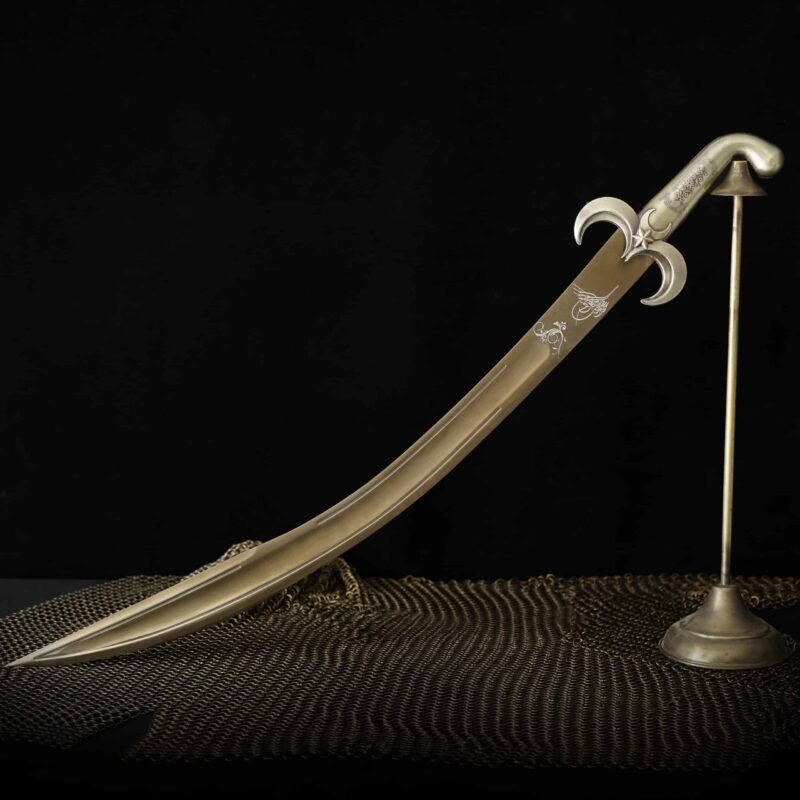

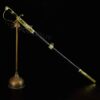
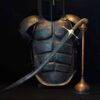
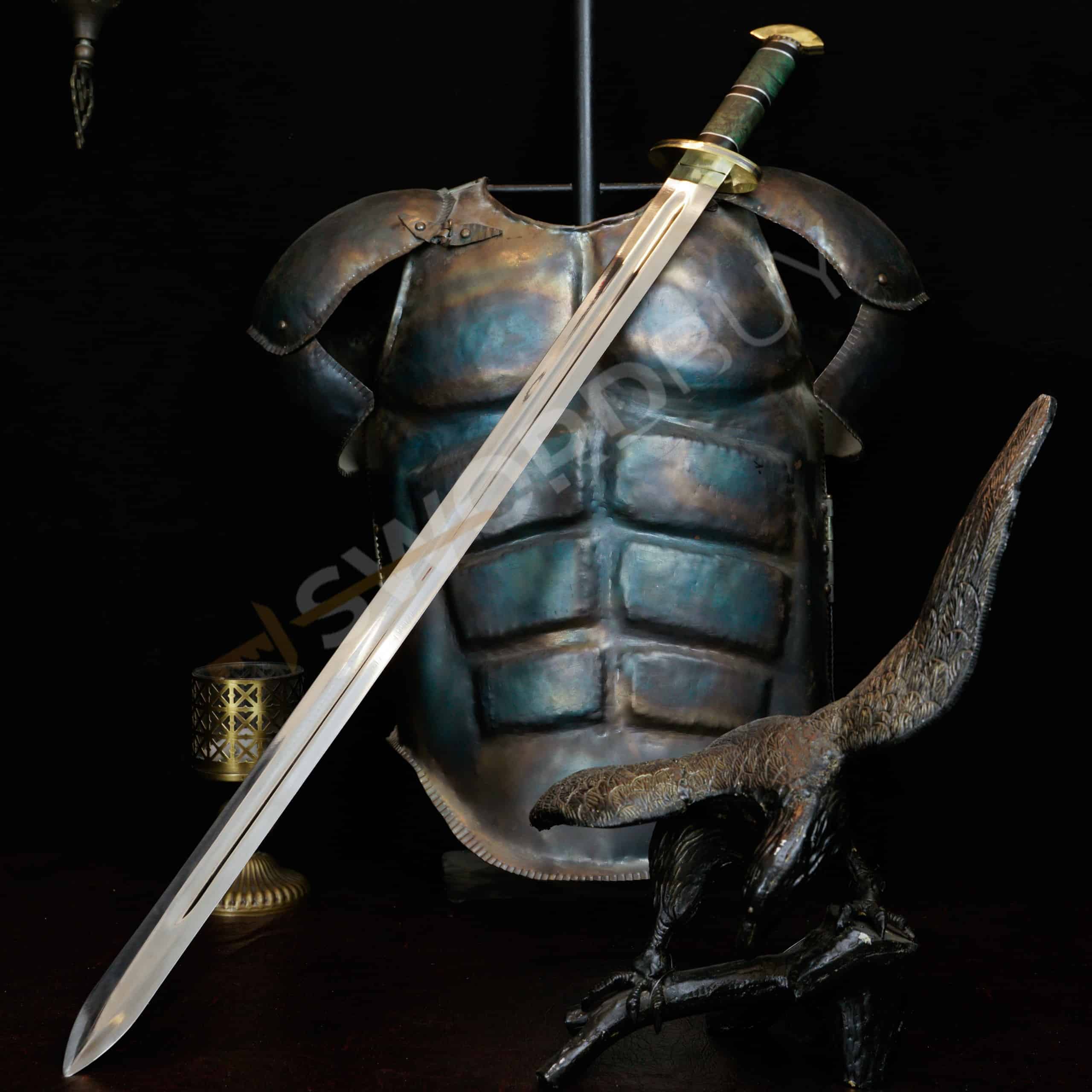
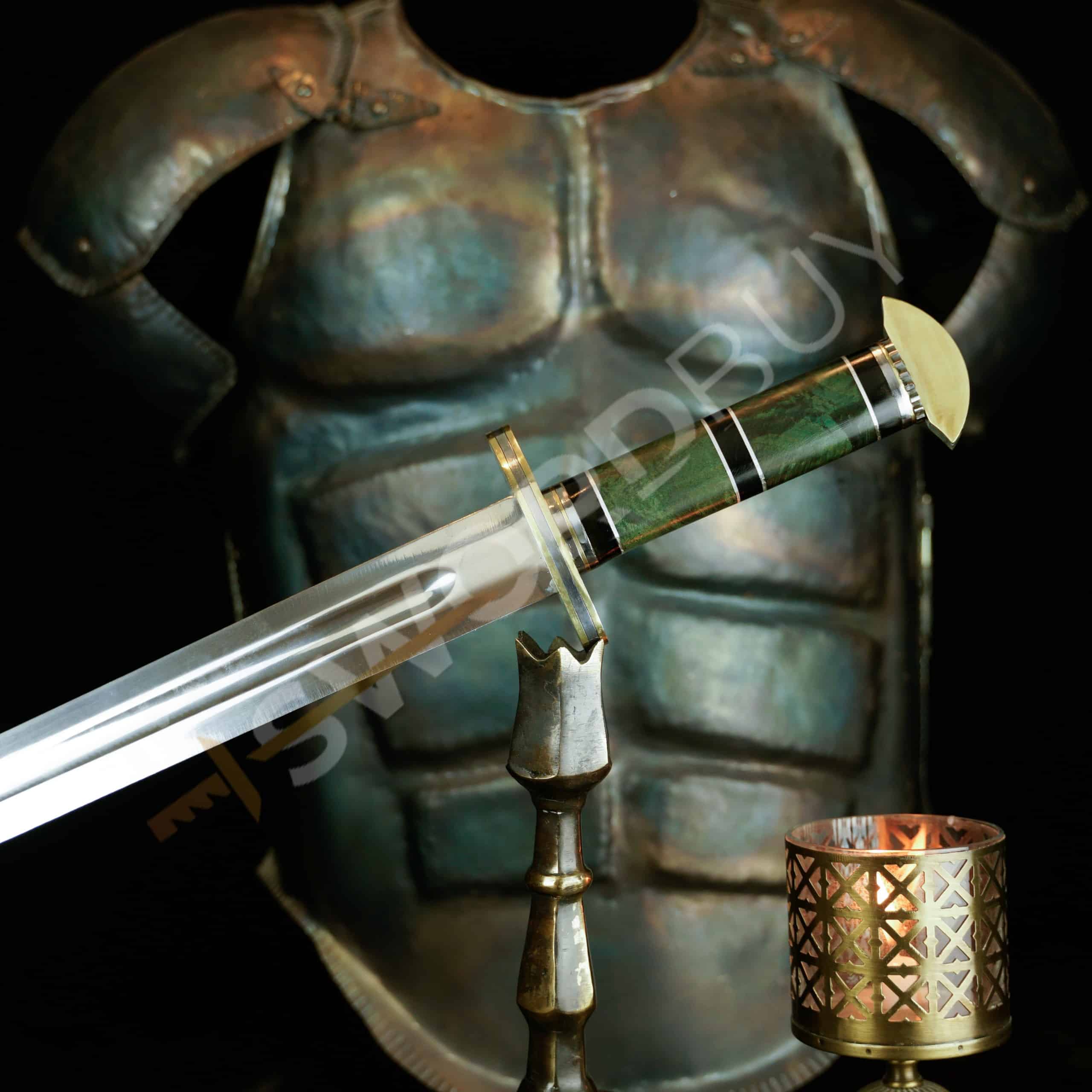
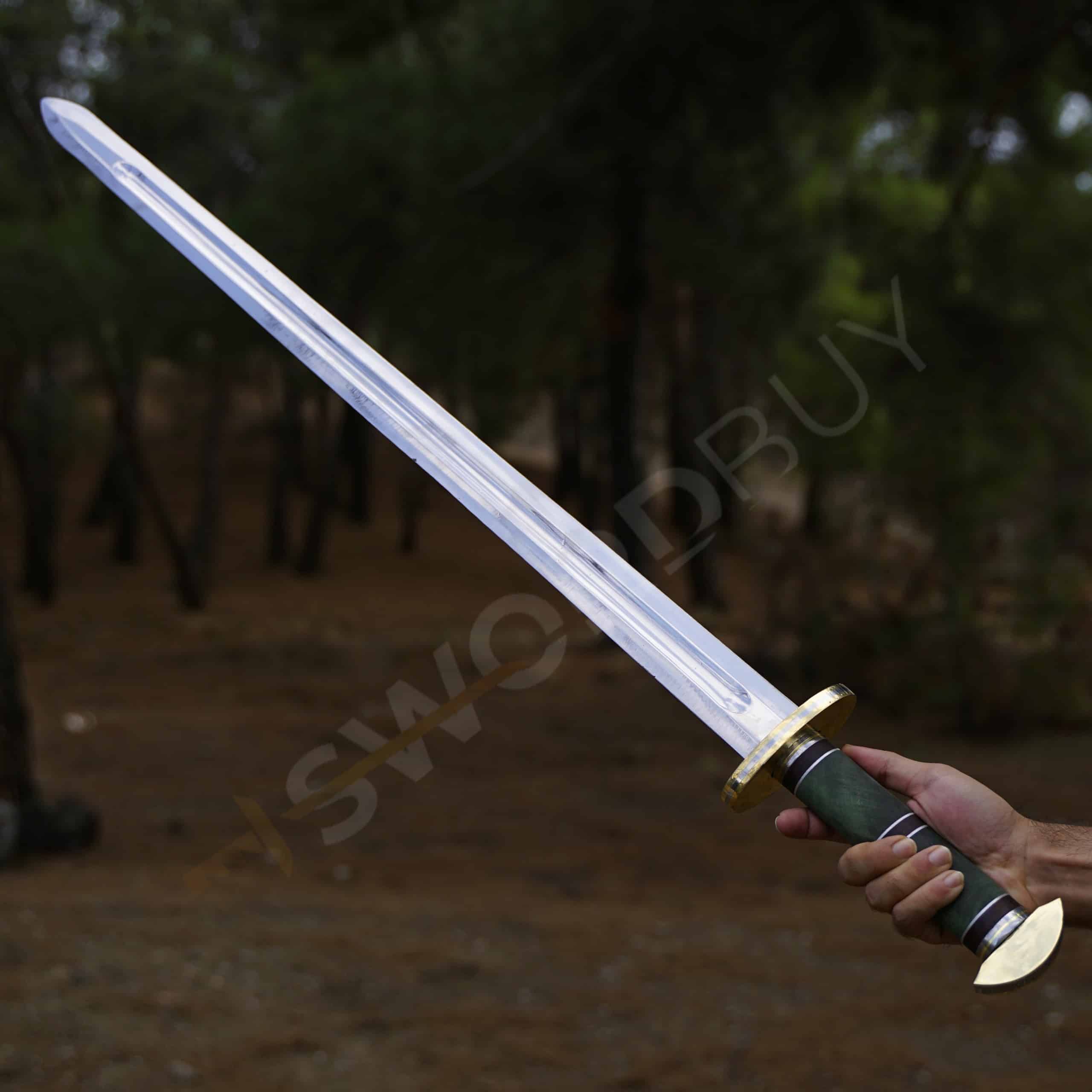
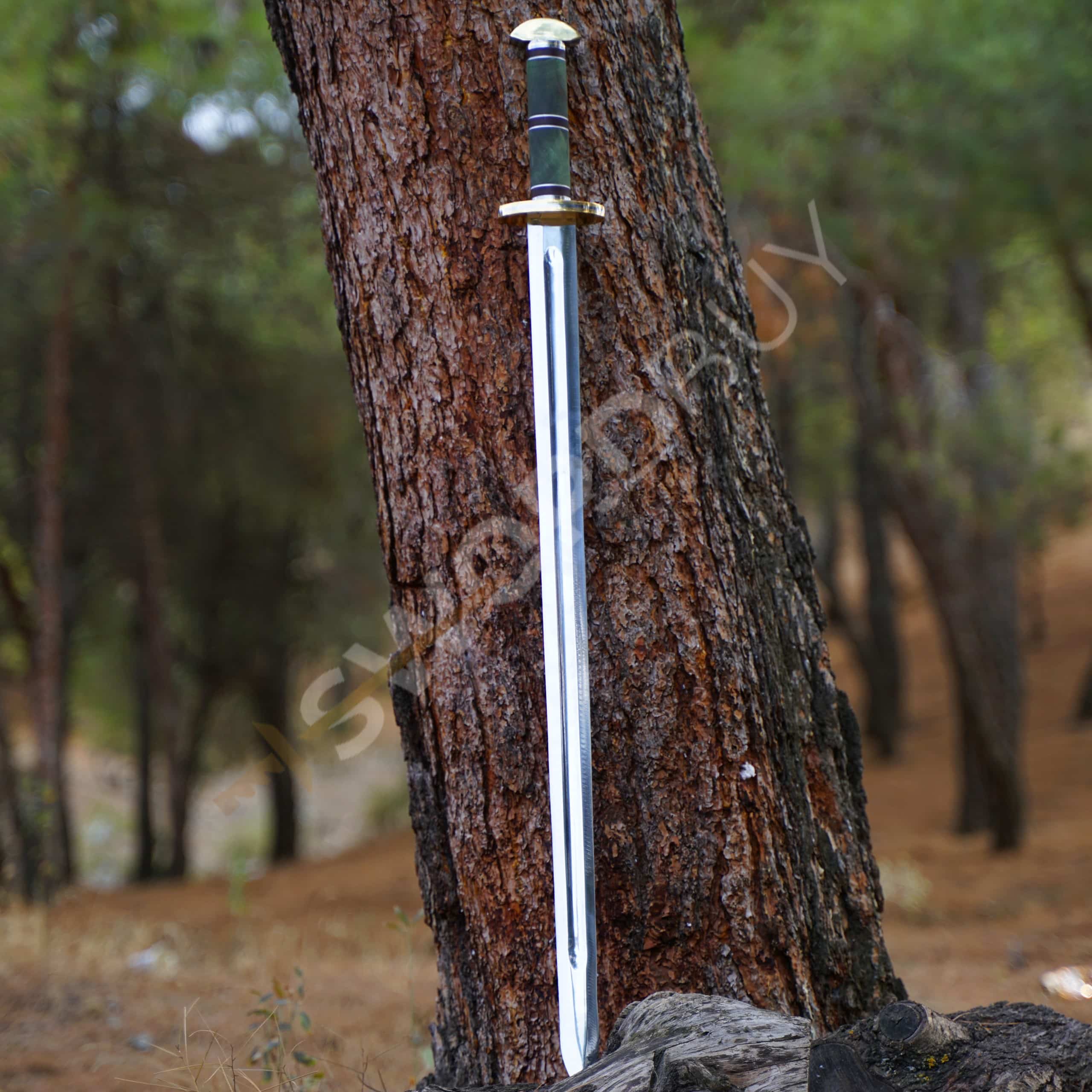
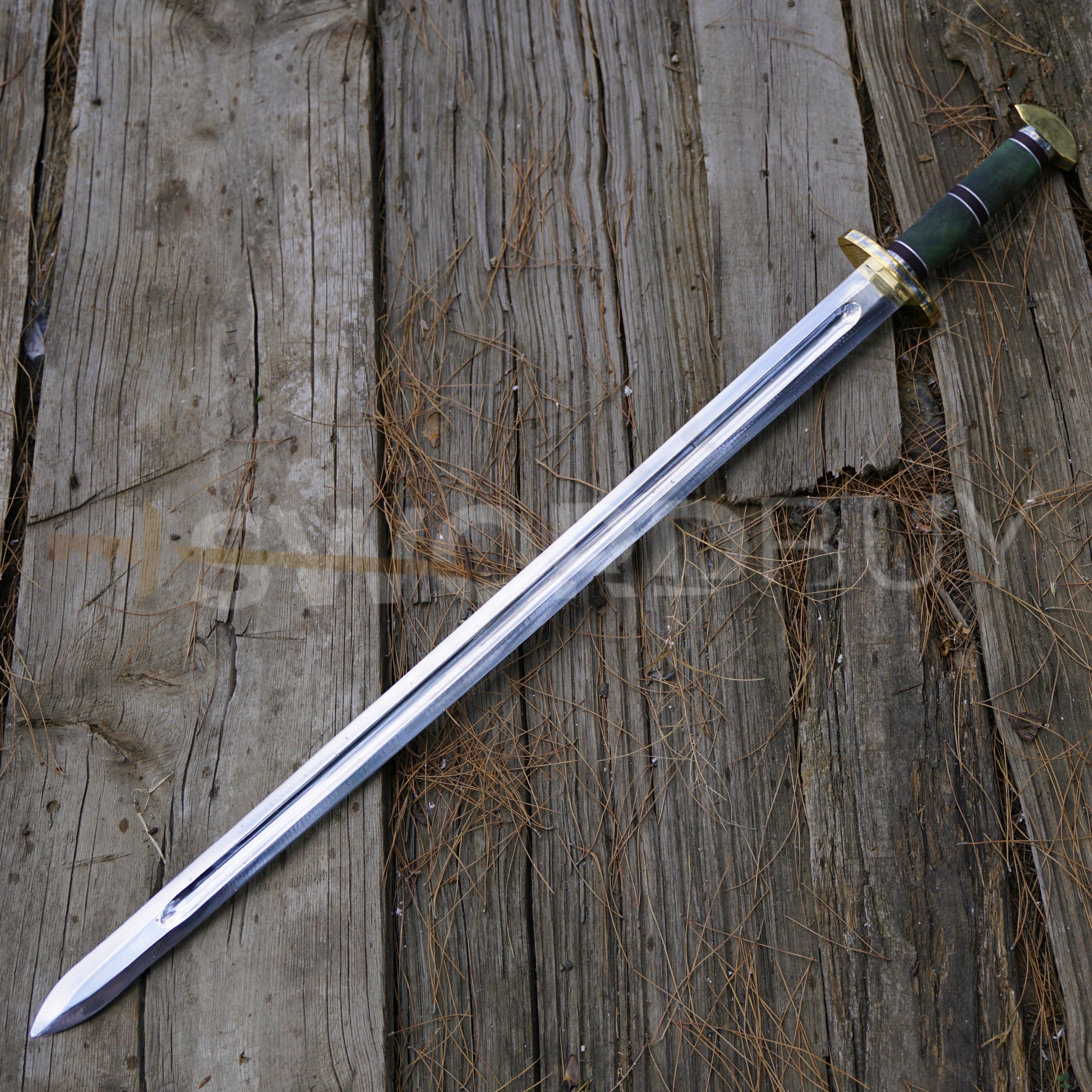
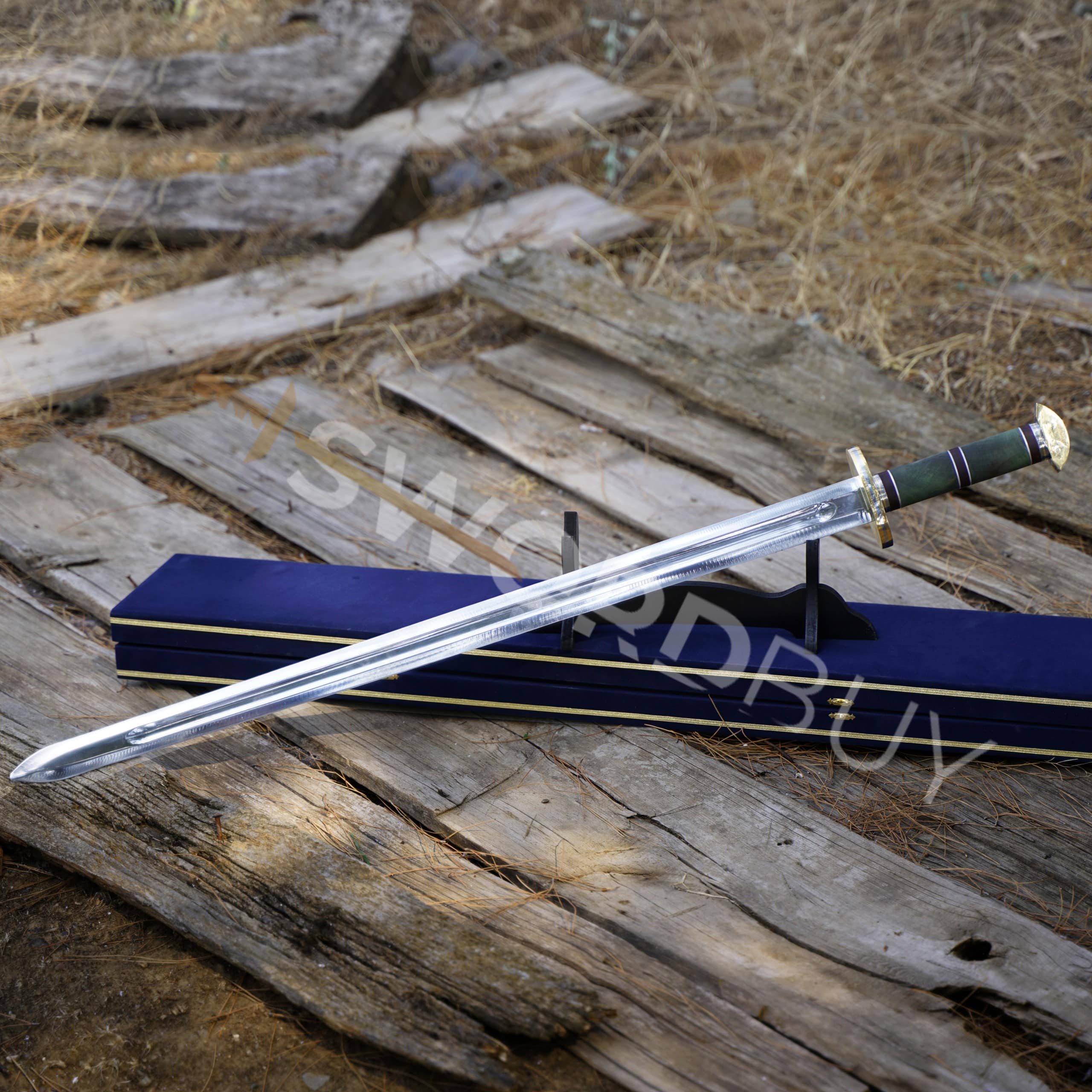
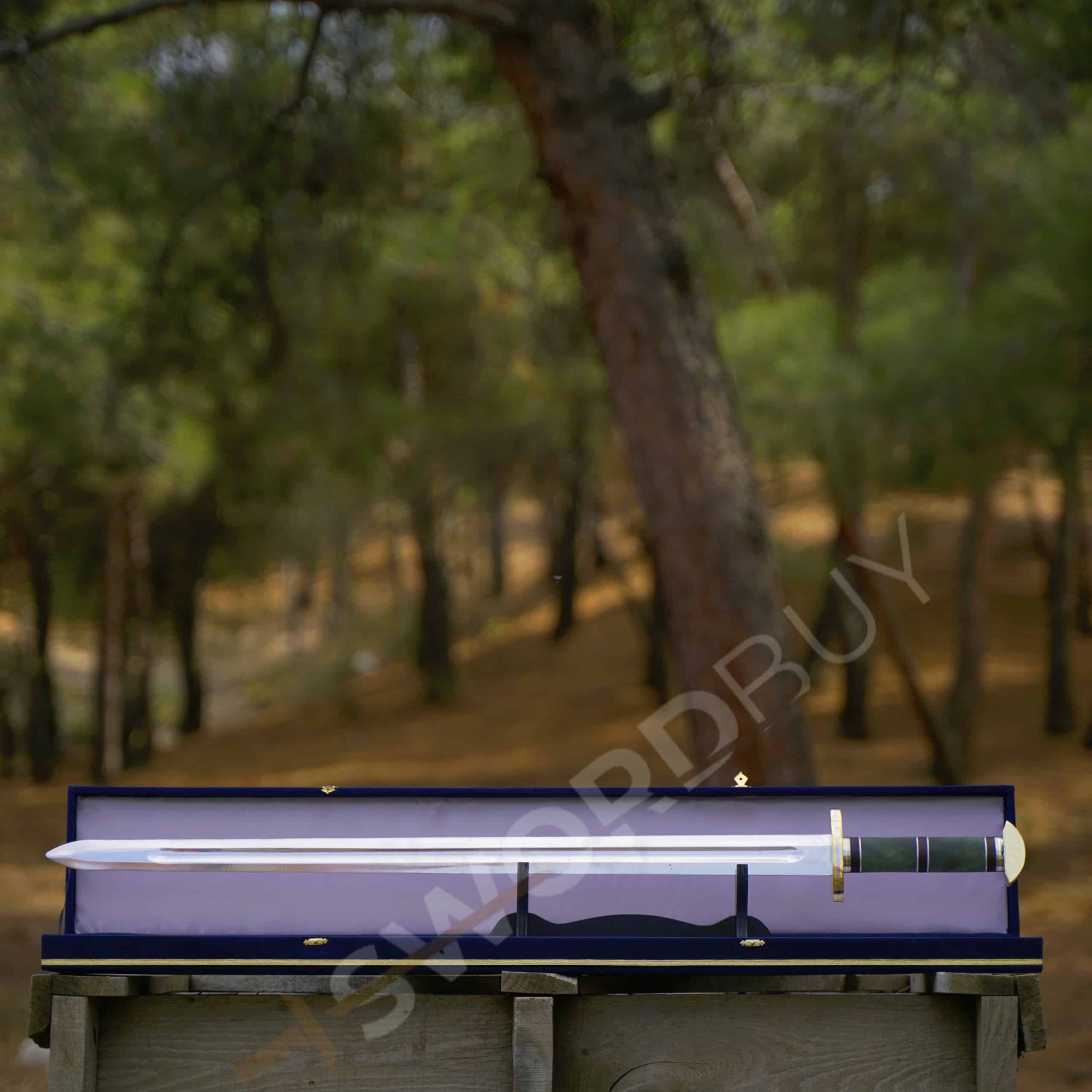
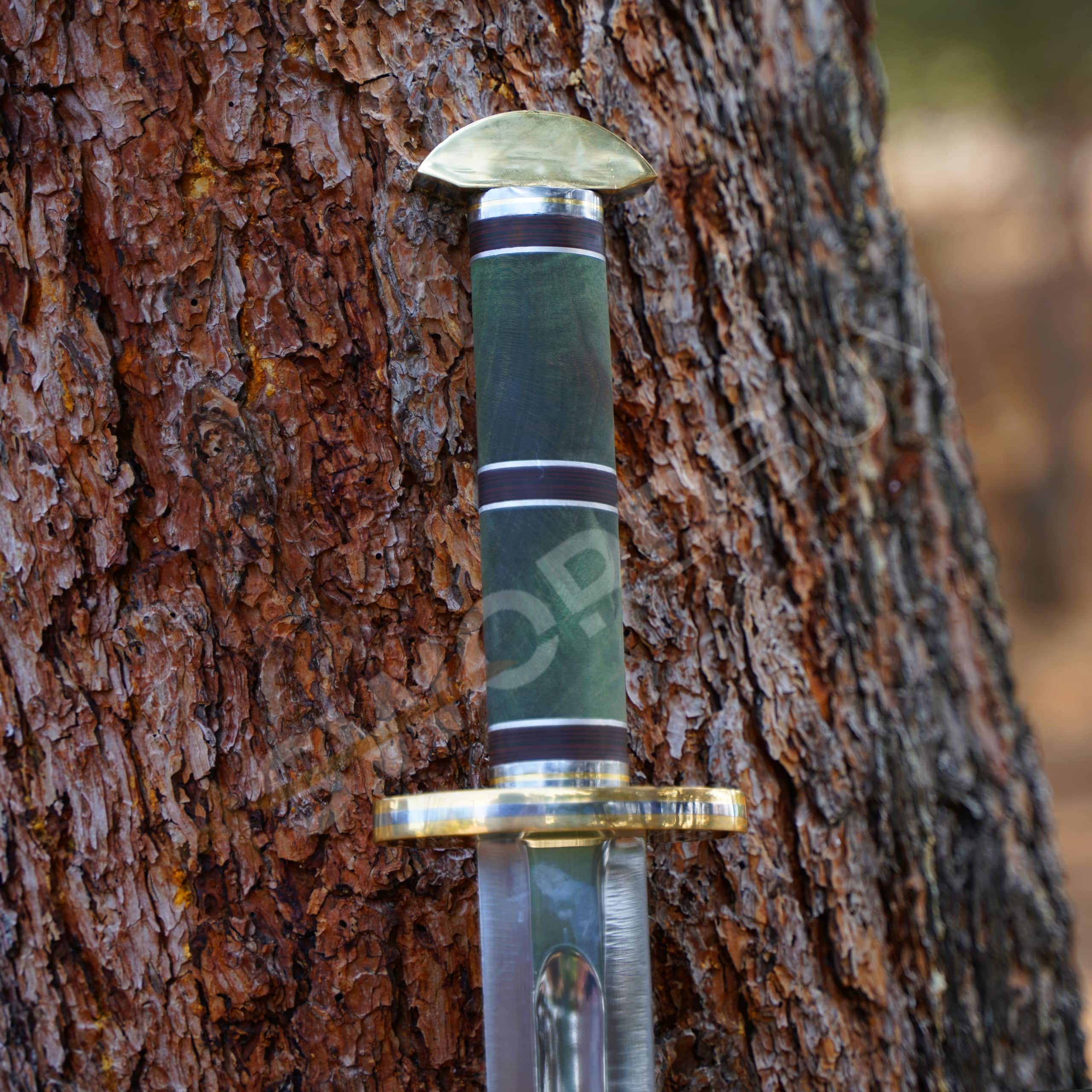

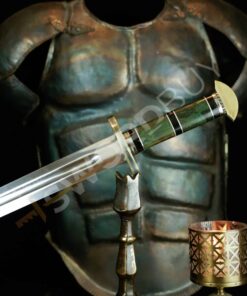
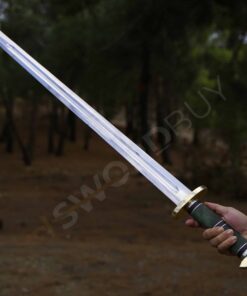
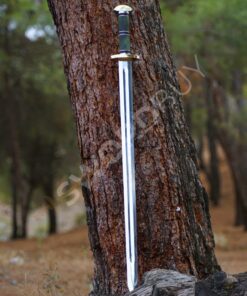
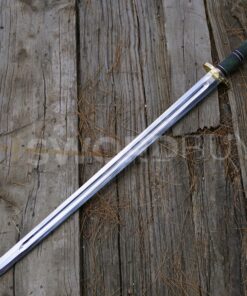
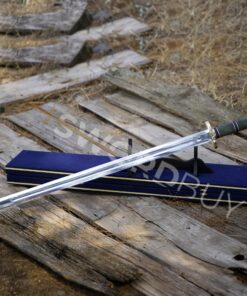
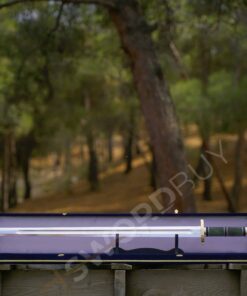
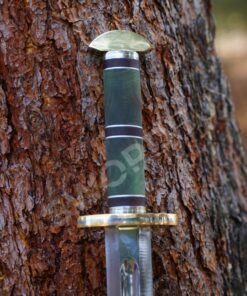
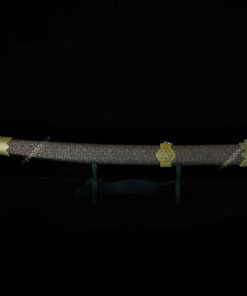
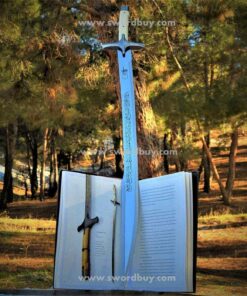
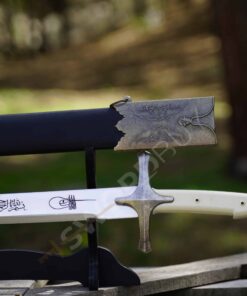
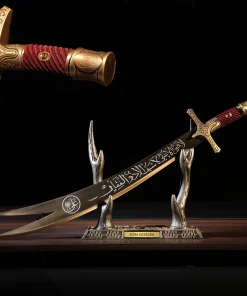
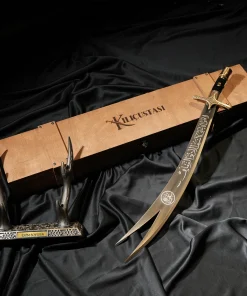


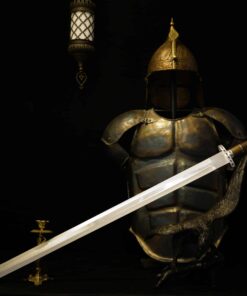

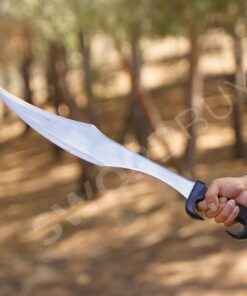


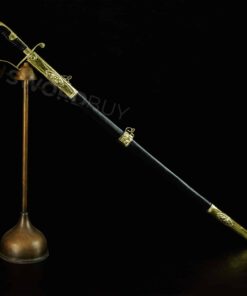
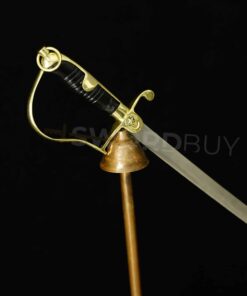
Reviews
There are no reviews yet.